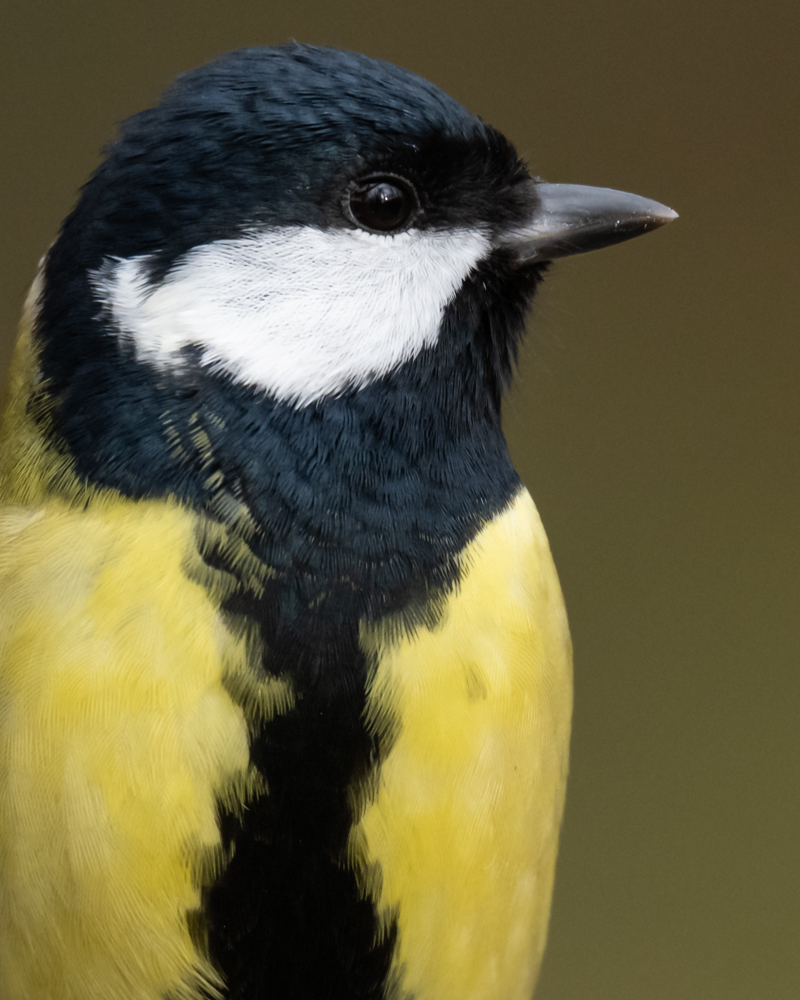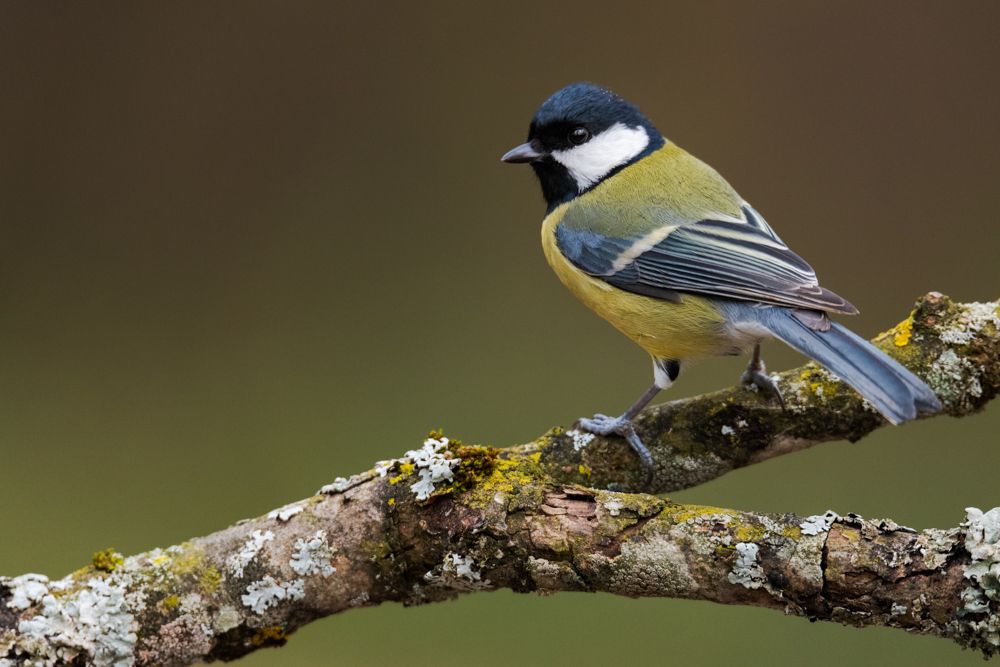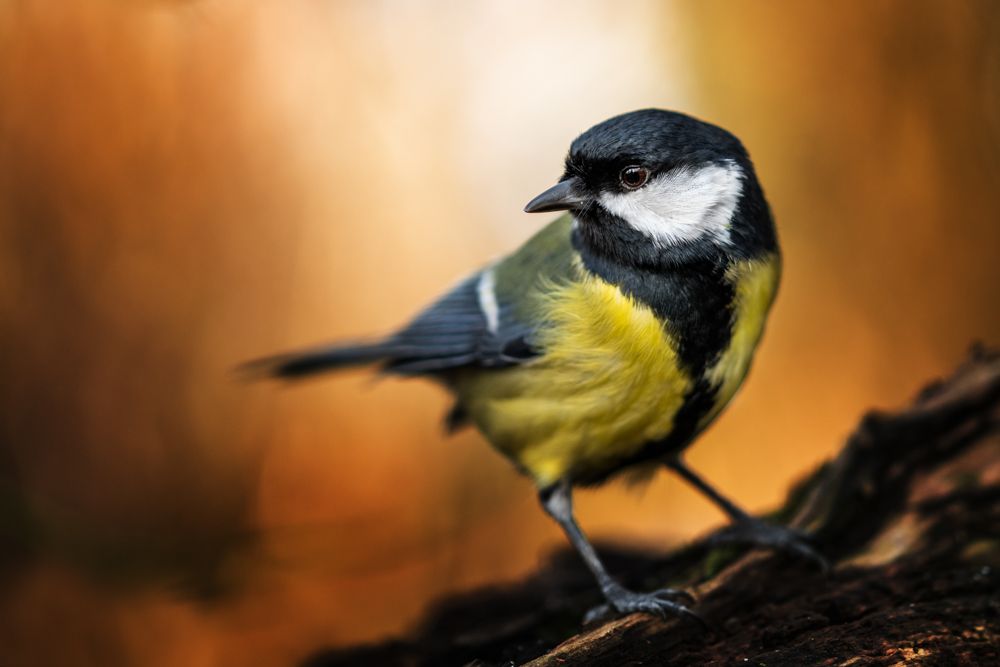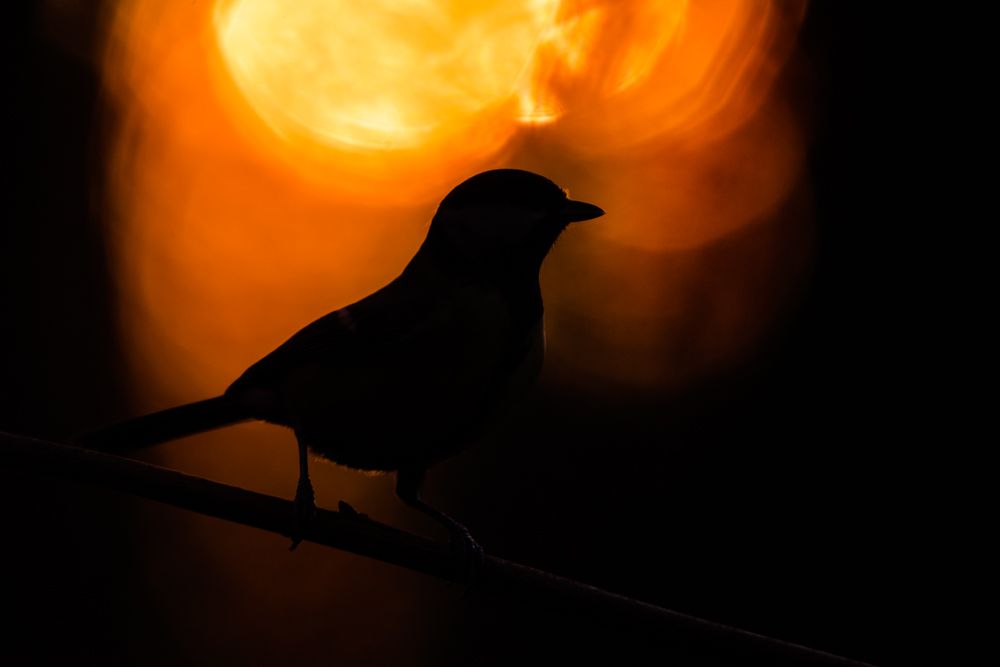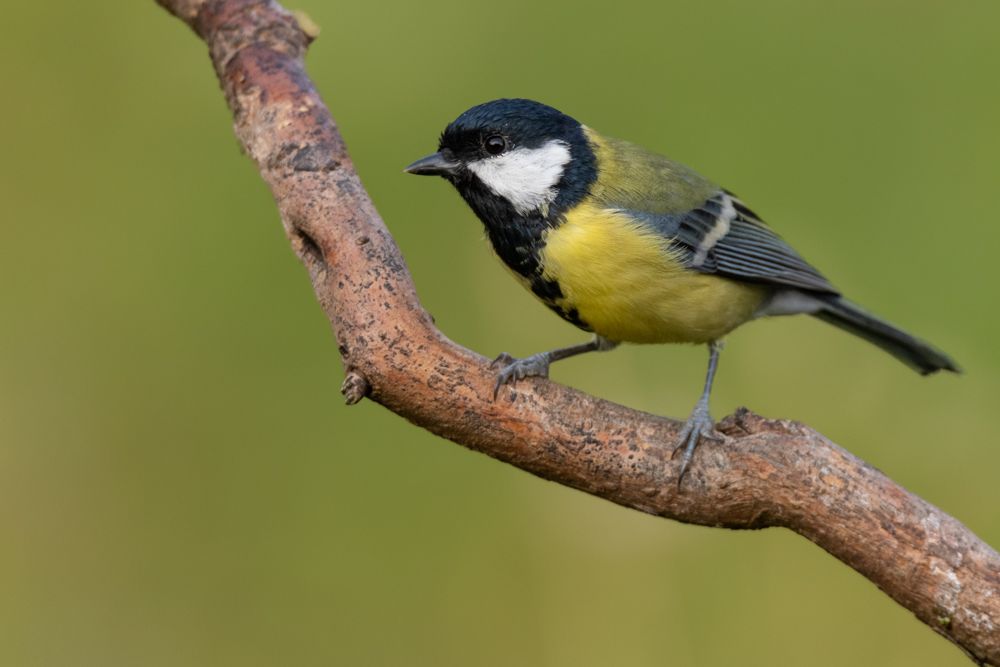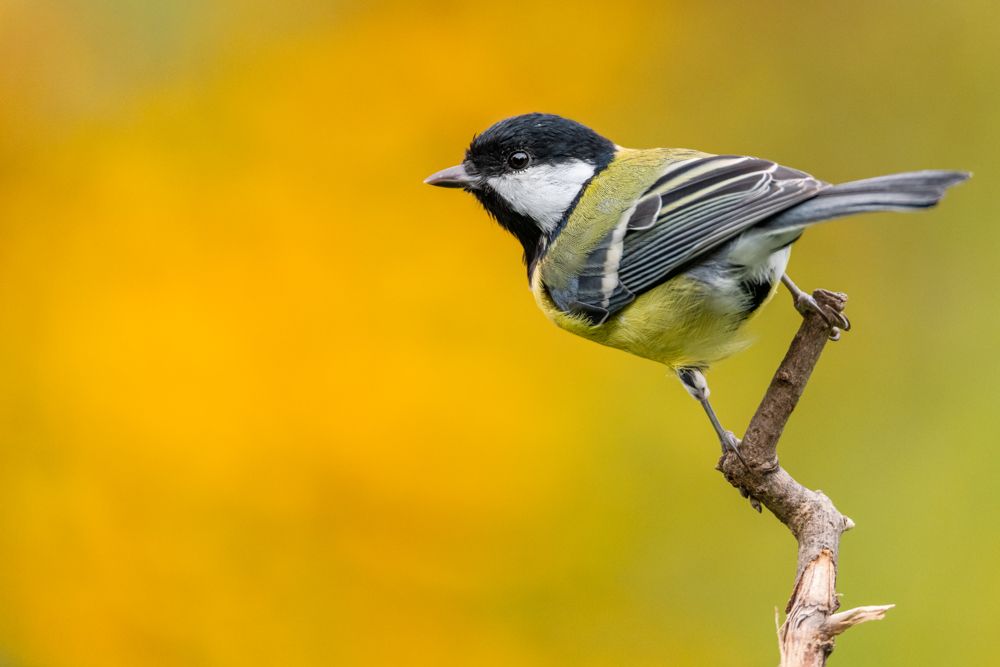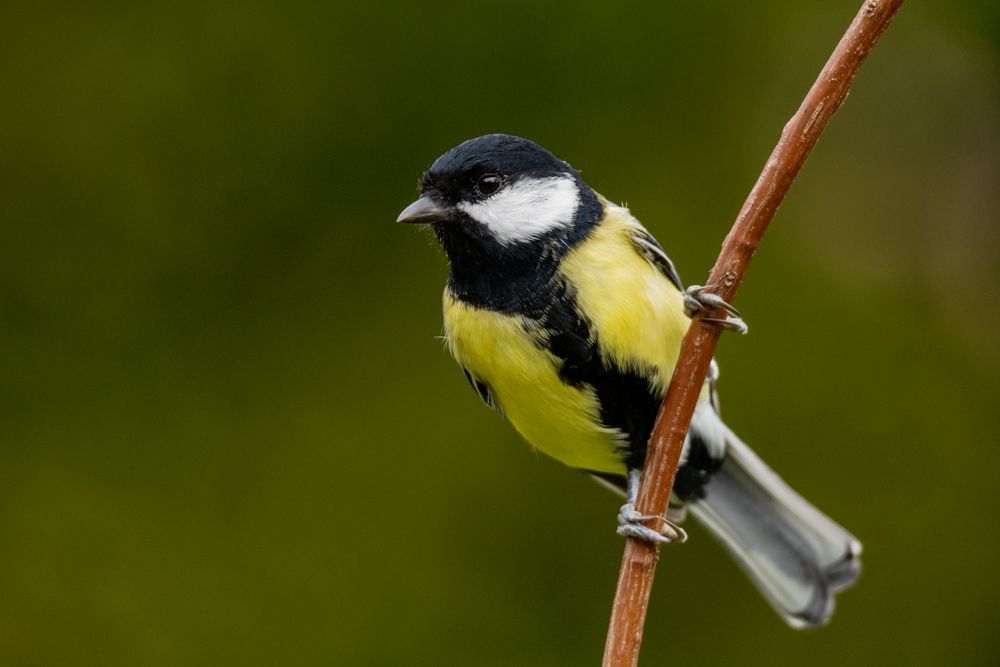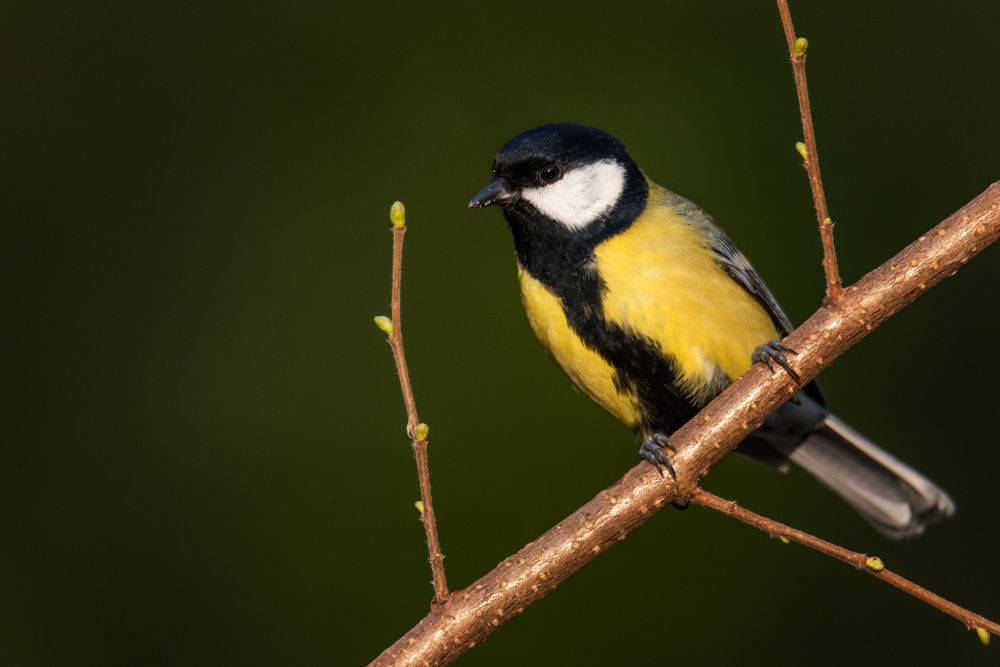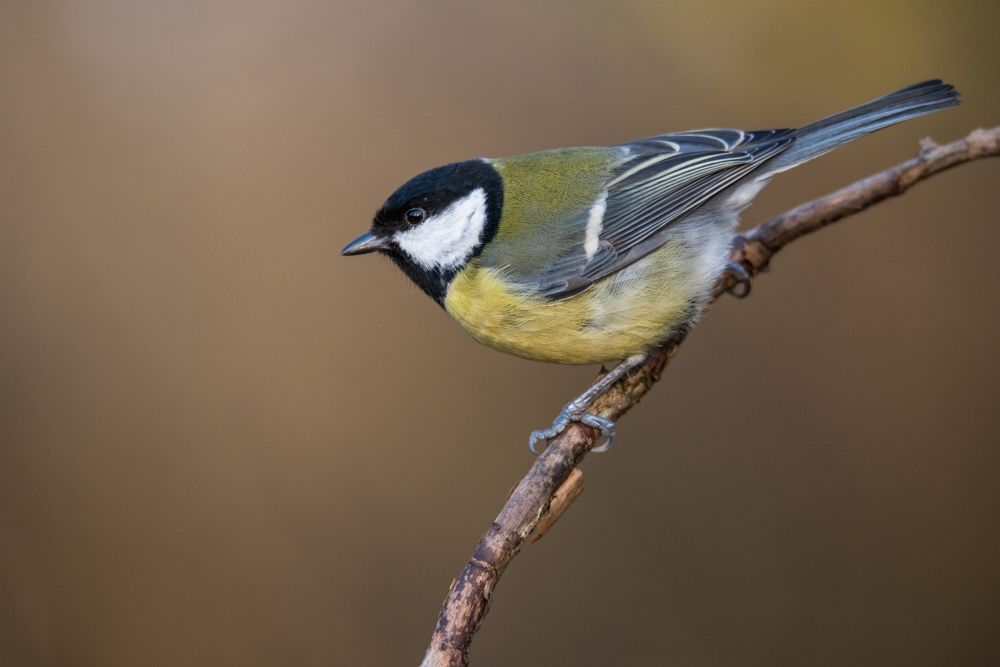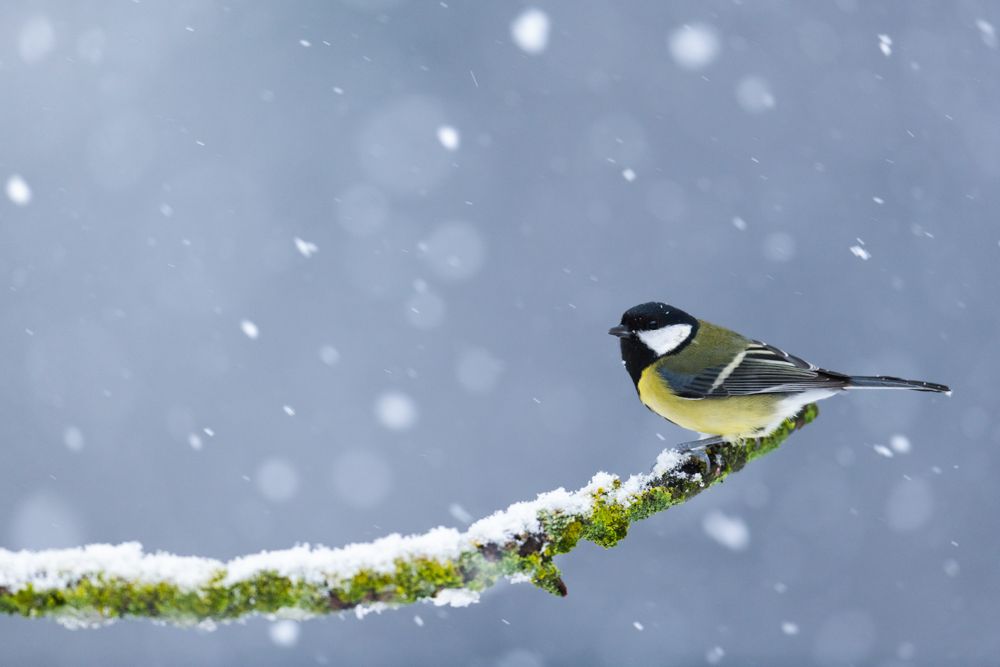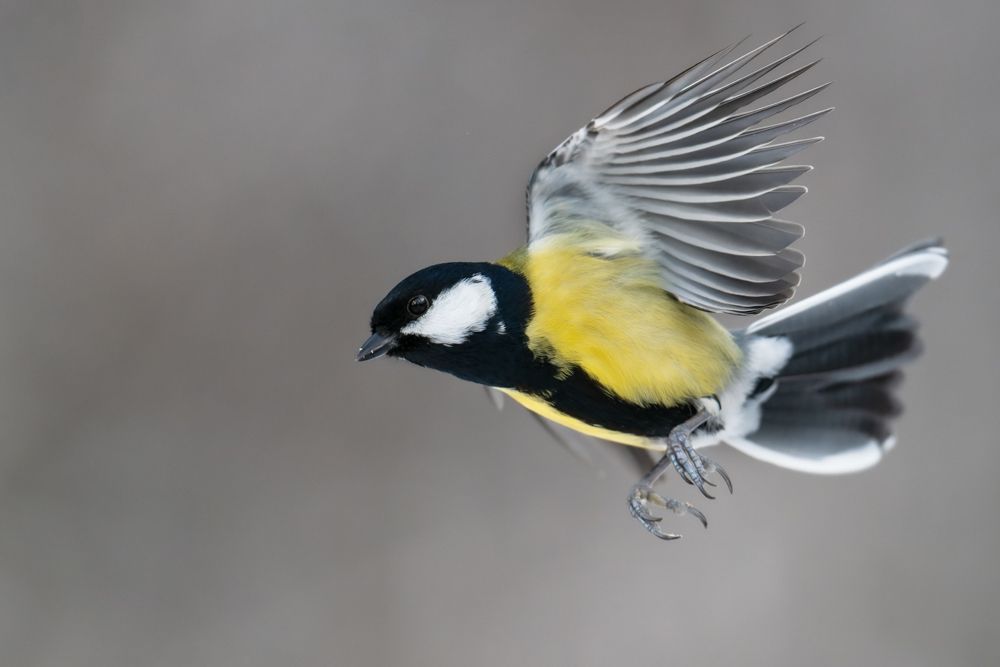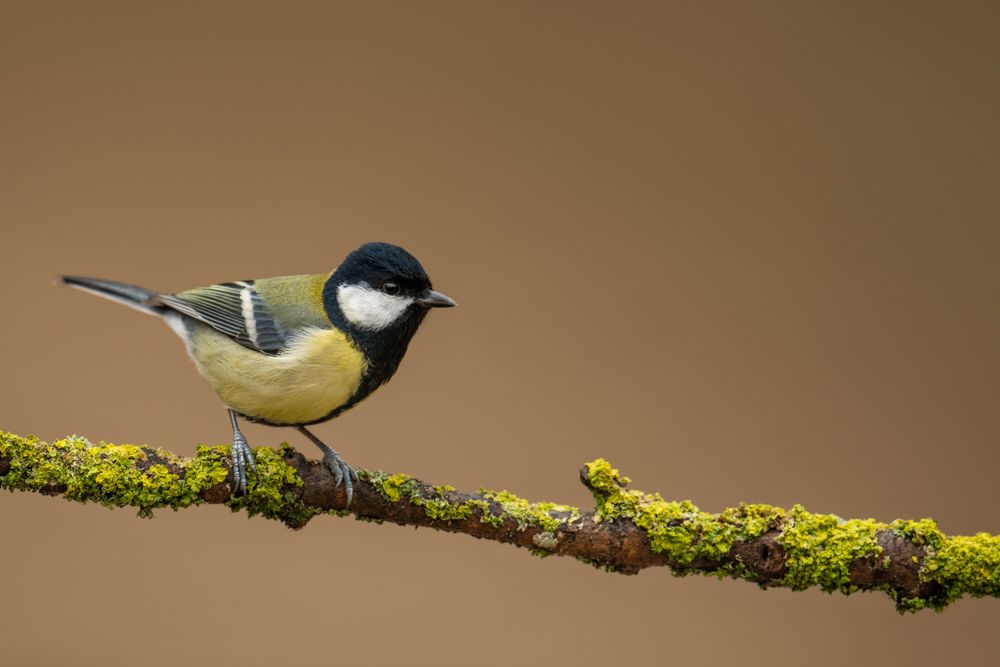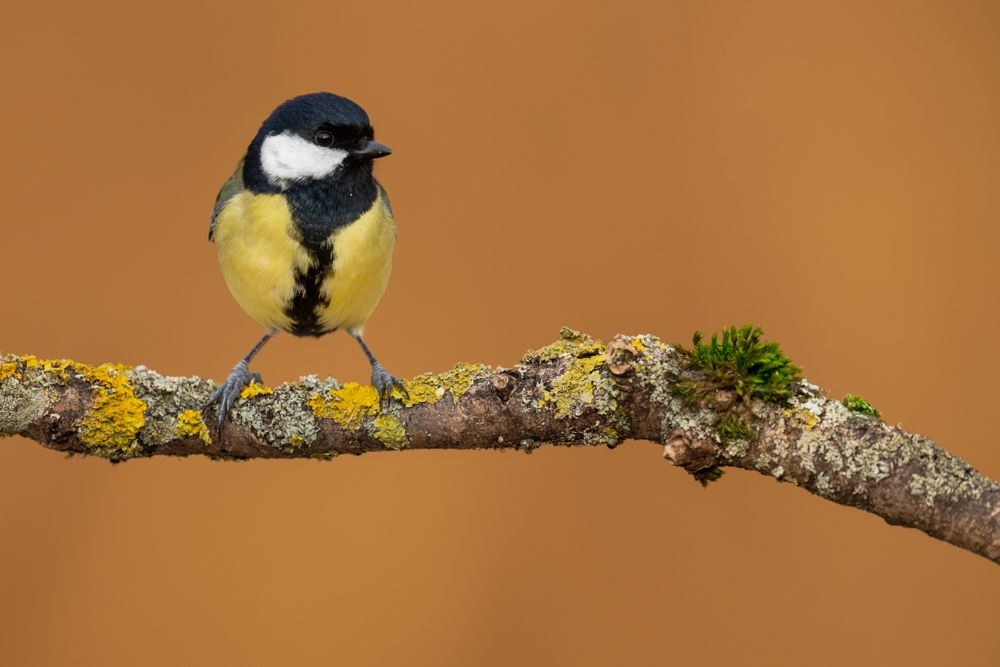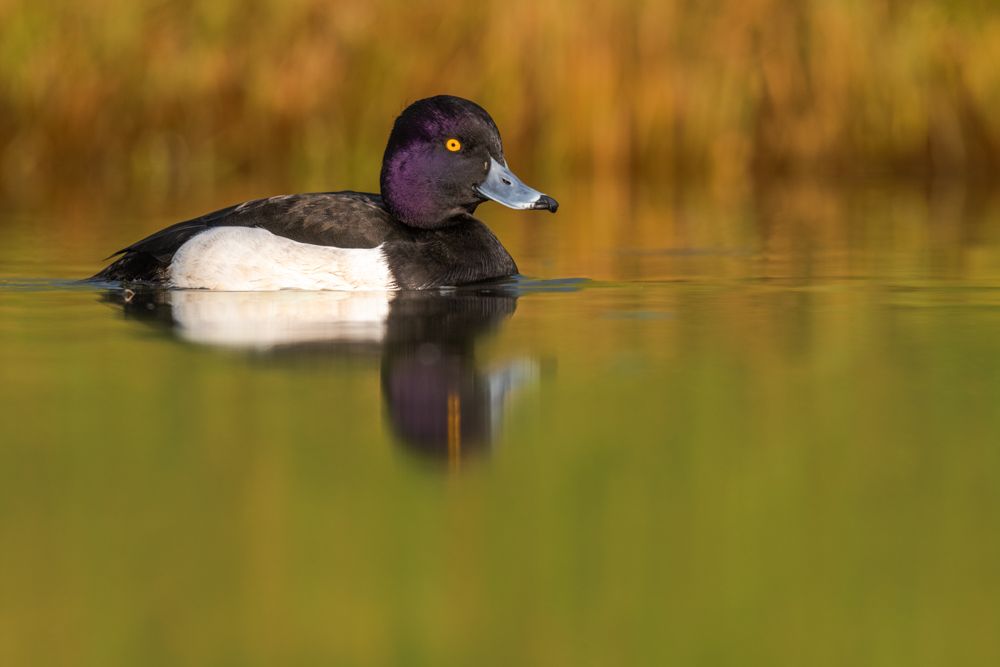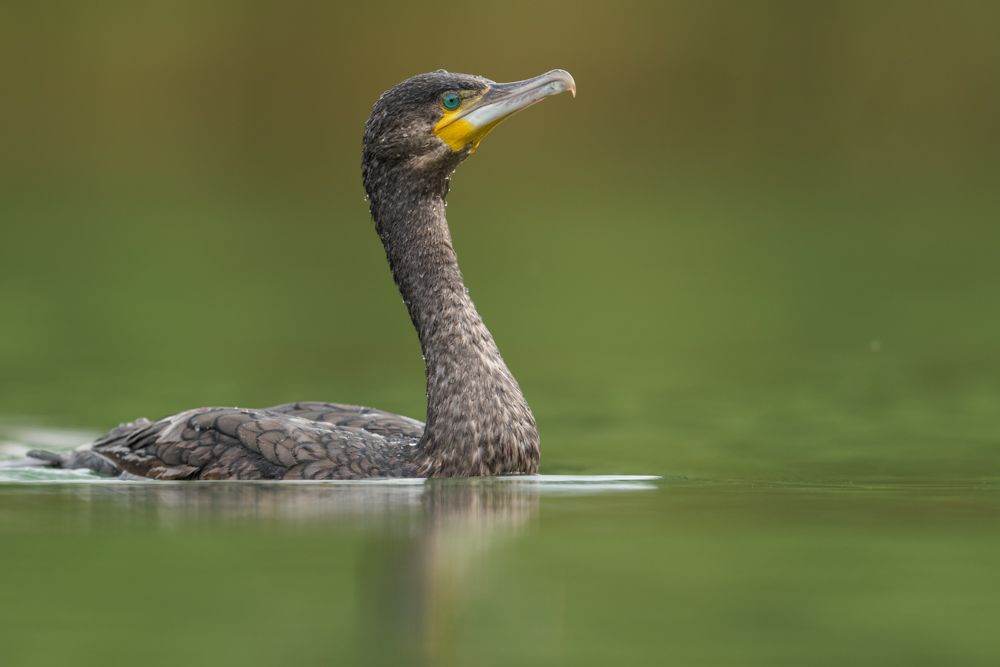Kohlmeise (Parus major)
Profile
Scientific name: Parus major
Class: Birds
Order: Passerine birds
Family: Tits
Length: 14-15 cm
span width: 21-23 cm
Weight: 16-21 g
Distribution: Eurasia
Breeding population CH: 400'000-550'000 pairs
Habitat: Forest, settlements
Migration behaviour: resident bird, short-distance migrant
Appearance
The great tit can be easily identified by its black head and white cheek field. In comparison to other similar tits, such as the Marsh Tit or the Coal Tit, the Great Tit is very intensely coloured.
Great Tits show only a slight sex dimorphism. This means that males and females differ only slightly in appearance. Determining the sexes is therefore somewhat more difficult. While both males and females have a black-coloured chest band, this is narrower and less strongly coloured on the females. Because this characteristic can differ from individual to individual, the determination is additionally difficult. Only if you have several individuals in front of you at once, the determination is a bit easier.
The young birds are generally similarly coloured as the adults. But the colouring is much less intense and a little more yellowish.
Risk of confusion
At first glance, almost all native tit species are quite similar. However, the great tit is much easier to determine than, for example, the marsh, willow and alpine tit, due to its intense yellow colouring.
Where does the great tit live?
The great tit breeds in all kinds of forests or even in the middle of settlements. Just a few trees are enough. In the Alps, the great tit breeds up to the tree line, i.e. up to 2000 m above sea level.
Occurrence in Switzerland
The great tit breeds in all kinds of forests or even in the middle of settlements. Just a few trees are enough. In the Alps, the great tit breeds up to the tree line, i.e. up to 2000 m above sea level.
What does the great tit eat?
The great tit feeds mainly on insects such as spiders, mosquitoes and especially larvae. In winter the great tit also eats vegetable food. In the vicinity of settlements, it is a very frequent guest at feeding stations.
Breeding behaviour
The great tit breeds in tree and other caves. In these caves, the great tit builds a nest of moss, hair and feathers. The female lays 6 to 12 eggs in this nest, which are incubated alternately by male and female. The young great tits hatch after about 2 weeks. The young great tits are preferably fed with caterpillars by their parents. After a further 18 days the young great tits attain their flight ability and leave the nest. The young great tits are then fed by their parents before they gradually become independent and leave the territory of their parents.
Migration behaviour
The great tit can be found in Switzerland throughout the year. The great tits, which breed here in Switzerland, mostly stay here even in winter. In addition to these annual birds, individuals from the northeast come to Switzerland in winter to spend the winter.
Photographing great tits
Great tits can be photographed relatively easily, especially near settlements. Especially in winter, many great tits visit settlements. Bird feeders are a good source of food for tits, finches and other songbirds. Especially in parks or small forests near settlements, great tits get used to us humans. This of course makes taking pictures easier. If you need tips for photographing birds you should check out one of my older blog articles, where I have listed all the important things you need to know about bird photography.
Other species
Resources
The population figures, length, weight and wingspan correspond to the data of the Vogelwarte Sempach
Information on behaviour, distribution etc. is based on my own observations and was supplemented with information from the following sources:
The Birds of Switzerland (2007) Lionel Maumary et al.
Swiss Breeding Bird Atlas 2013-2016
The Cosmos Bird Guide (2017) Lars Svensson et al.


